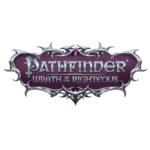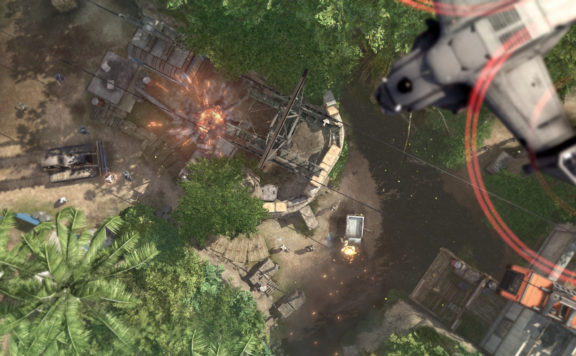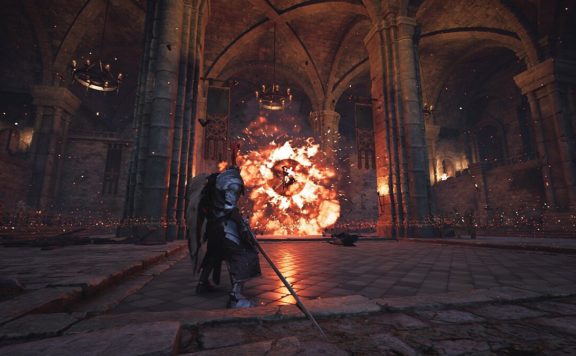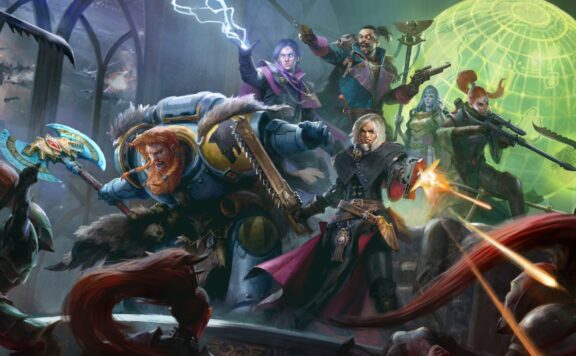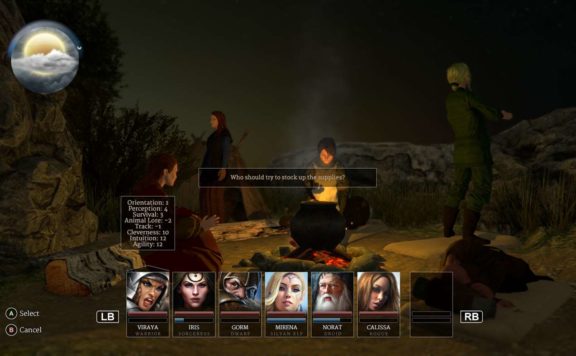Pathfinder: Wrath of the Righteous is a classic party-based cRPG developed by Owlcat Games and an indirect sequel to the studio’s previous work Pathfinder: Kingmaker. The game invites players to take part in a century-long conflict between mortals, demons and other interested celestial parties. The stakes have never been higher, and the fate of the region of Mendev or perhaps the entirety of Golarion rests on your shoulders.
Are you ready to join the Fifth Crusade, gather your party and venture forth to take the fight to demons and other creatures of the Abyss? This is our Pathfinder: Wrath of the Righteous PC review.
Note: there are minimal spoilers ahead, going no further than the first chapter of PF: WotR, and no more than you can find by scanning the Steam/Kickstarter page of the game.
The events of the game take place in the same fantasy world as Pathfinder: Kingmaker, Golarion, but in a different, far away region and some time after the end of the first game. As such, you will be able to run into a few familiar faces from Kingmaker and hear some vague comments about an upstart barony-turned-kingdom in the Stolen Lands. However, don’t expect much from those little nods to the first game.
Your path begins in a crusader nation of Mendev, defined by its century-long raging conflict with demonic forces and the neighborhood with the Worldwound – the rift between Golarion and the Abyss. Over the course of four Crusades, Mendevians pushed against the demons with the help of other nations and were met with varying successes and failures, such as the loss of the city of Drezen.
However, the balance of forces is about to change. Just as all teetered on the edge and the defeat seemed unavoidable, your character unlocks tremendous Mythic powers that allow you to set in motion a chain of events that has a chance to end this conflict once and for all. But what is the origin of your mysterious newfound power? And what will be the price to pay for it? Are you the chosen of the fate or an unwitting pawn in someone’s elaborate plan?
Over the six lengthy chapters of the game, you will find answers to those questions as Pathfinder: Wrath of the Righteous sweeps you off your feet to take you on the epic journey. Where Kingmaker started slow and relatively humble, with bandits and trolls before slowly delving into the cursed past of the Stolen Lands, the new installment does not give players time to adjust to the dark reality of Mendev.
Demons! Dragons! Angels! Cultists and Paladins! All of it awaits you in Pathfinder: Wrath of the Righteous, as your character and their party are thrown in the middle of a century-long conflict.
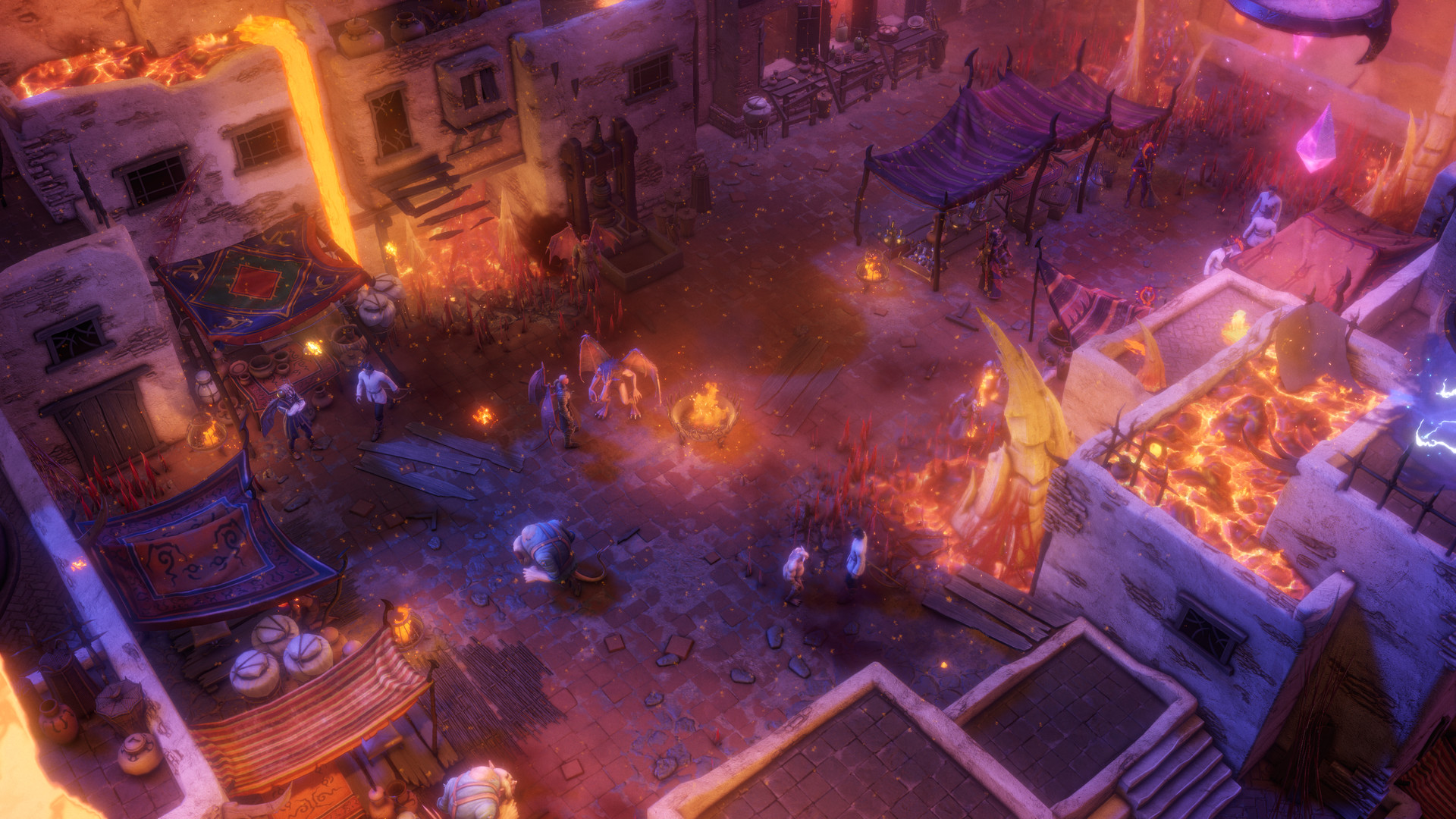
At a certain point in the story, you will need to commit to a Mythic Path, a new massive feature added to Pathfinder: Wrath of the Righteous. A Mythic Path is something akin to a prestige class but dictated entirely by your narrative choices.
The game provides the following options: Angel, Azata, Aeon, Trickster, Lich, Demon, Gold Dragon or Swarm-That-Walks. You can also choose the path of the resolute Legend, a simple mortal that chooses to completely leave aside Mythic powers. There might also be some less obvious choices if you look around carefully!
The Mythic Path affects the story and the relationships with your companions and the Crusade in a grand way, even more so than your character’s chosen Alignment. We’re talking about unlocking completely new story routes, blocking certain choices altogether, recruiting new companions (such as a Dragon companion for Azatas), having certain party members leave or be recruited early, and much more.
Make sure that you choose the type of character you want to play: there is no option to play an evil Angel or a good Lich. Sooner or later the Mythic Path-driven choices will change your character’s existing Alignment to be fitting or adjacent to what you expect from the given Mythic Path.
What will be the story of your Fifth Crusade? A righteous Angel backed by an army of zealous Paladins? A furious Demon, taking out its rage on those who dared to defy it? Or even a powerful Lich surrounded by an army of undead minions? Watch the world around you change as you make your choices: who will live? Who will die? Who will stay by your side or leave in disgust?
This unprecedented level of replayability has me planning the next playthrough before I’m even done with my first one completely, looking at certain events unfolding and thinking “Next time, I’ll try a different option!”
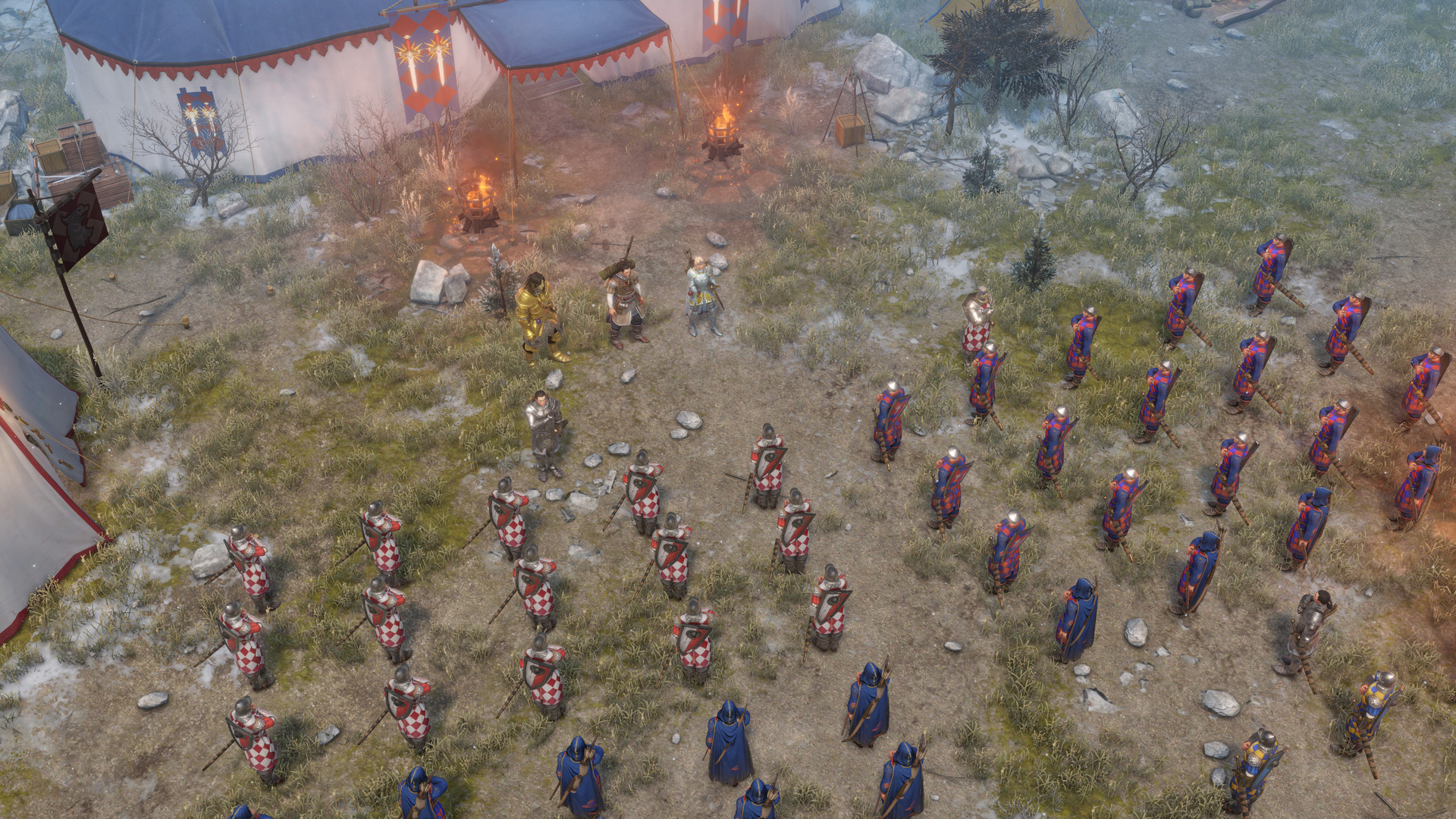
If you thought a chance to create a kingdom in the Stolen Lands attracted a cast of wildly different personalities, just wait till you see this lot!
Pathfinder: Wrath of the Righteous features twelve main companions that might join you in your adventures, coming from various races, backgrounds, alignments, and having their own game-spanning personal quest chains and, in some cases, romances. Of course, each particular character also has their own reasons for joining the Crusade: some see it as their duty or salvation, some are entirely more selfish than that.
Every single character, including the sentient weapon Finneas, is voiced. While their lines sometimes remain unread, the overall amount of voice-acting included in the game is a huge step forward compared to Kingmaker. Not only the companions but important NPCs and even random demons screech at you from all sides.
A bit of subjectiveness, but I feel like Owlcats have taken a huge leap forward when it comes to writing, in particular writing characters. The Kingmaker’s lot was interesting, I liked most of the companions and was left pretty indifferent to only a few characters altogether.
However, with Wrath? Very few characters actually left me feeling indifferent, and the majority of them I had either really liked or really disliked – in this particular case, as people, meaning that they are written well enough to provoke negative emotions by their personalities.
Of particular interest is that these two groups ended up not matching my expectations. You see, I have very strong preferences, types even, when it comes to RPG characters and companions – smart-mouthed, charismatic, roguish and slightly chaotic personalities. As I was going over the companion reveals during the Kickstarter campaign, I sort of made mental lists of the characters that seemed interesting and piqued my interest and… well, others.
Except this time I ended up benching the most roguish and charismatic characters and instead going for the types that usually leave me unimpressed. It turned out similarly with the larger story, with me making choices I couldn’t have foreseen when I started the game.

Having discussed what the game feels like, let’s move onto what it actually plays like.
Like many RPGs out there, Pathfinder: Wrath of the Righteous starts with the creation of your character, an impressive and highly overwhelming endeavor. Compared to Kingmaker, the character creator has been greatly expanded and now offers access to 25 classes (each with its own archetypes!) and 12 races that you can try out for yourself.
That means over a thousand spells, feats and abilities to choose from, and that’s enough to make one’s head spin at the possibilities.
Of course, if you are into being a Mathfinder, you can find a bunch of min-maxing tutorials to achieve the ultimate peak of character creation, but if you are a more casual gamer, the sheer amount of things to choose from can be a bit overwhelming.
If you don’t care much for beating the game at the highest difficulty, consider what kind of character you want to be, archetype-wise – a sneaky rogue? Archer raining death from distance? Warrior in a heavy plate? Animal companion or no? – and move from there. If you are completely lost in terms of what to do when your companions or even your main character level up, the game will offer the best feats or provide you with automatic level-ups if you select builds.
Additionally, PF: WotR offers extensive and quite flexible difficulty settings that allow you to adjust the game to your tastes.

Trying to create your Wrath of the Righteous character
The overall gameplay did not change much from Wrath’s predecessor, but there are enough improvements and enhancements to be easily seen.
As before, you can bring along your protagonist as well as up to five companions (not counting pets) of your choice. If you don’t like any of the party members provided by the game, be it their kits or personalities, you can also hire customizable mercenaries from Hilor to fill your party with. There is a setting that allows you to decide if your benched companions are getting experience alongside the active ones.
In Wrath, you can switch between the turn-based and real-time with pause combat modes at any point of time, depending on the situation you find your party in. Are you under attack by a swarm of minor demons or wildlife? Just let your party crush them in real-time.
Do you find yourself in the presence of a boss where every action by your characters has a chance to turn the tide of battle? The turn-based combat allows for a greater degree of control over your party’s movements and abilities.
Owlcats have increased characters’ speed out of combat and greatly enhanced the combat animations. Additionally, there is an entirely new feature added in WotR: mounted combat. Provided that your companion is big enough to carry your character, you can choose to wage from the pet pal’s back! Altogether the animal companions have gotten a lot of love in Wrath of the Righteous, receiving their own gear, customization and progression.

Wrath will see you at the head of the Fifth Crusade, leading a great army against the creatures of the Abyss.
If you remember Kingmaker’s Kingdom management with a shudder, you will be happy to know that things are not quite so dire in Wrath of the Righteous. While you can’t get away from management altogether, the latest game has a more streamlined version of its predecessor’s feature.
Where in Kingmaker you had ten stats and thus ten Advisors, in Wrath, there are only four: Diplomacy, Logistics, Military and Leadership.
However, to make up for the simplification of stats, Owlcats introduced additional currencies you will need to tend to the needs of your crusade: Finance Points, Materials Points and Energy Points that you acquire daily. The amount of income can be increased by building certain structures in your settlements. Finance and Materials can be purchased for gold as well if you need an extra boost to hire additional troops or place buildings.
In order to give you a little nudge, the game also has the system of the Crusade’s morale – and the three banners that affect it: Victories, Conquest and Defense respectively. Far from Kingmaker’s infamous insta-death events (I remember you, Call of Abaddon), it nevertheless gently pokes players to keep fighting against the demonic invaders with the newly introduced turn-based tactical mode.
While the banners are green, the morale of your crusade increases daily, capped at 20 points. If you do not fulfill the conditions, the banners first turn yellow, still providing morale but at a reduced pace, and then red, finally starting to subtract morale points.
- The Banner of Victories: each victory over a demon army adds 4 days to the time it stays green.
- Banner of Conquest: each capture of a demon fort adds 30 days to the time it stays green. Reclaiming lost forts doesn’t count.
- Banner of Defense: as long as no crusader fort is under siege, the Banner of Defense is green. If any fort is under siege, it turns yellow for 3 days, then red.

One of the stretch goals for the Kickstarter campaign saw the addition of tactical battles for armies. If you have ever played Heroes of Might and Magic, Disciples or King’s Bounty, you’d know exactly how it works.
Early on, you can have up to 3 units in your army, with a variety of stats that decide the number of health points, attack damage, the order it would take in combat, etc. Some units have special abilities such as Clerics’ Lay On Hands that allows them to restore some of the fallen troops.
If the battle calls for it, you can order your troops to wait (for example, to let enemy units come into the range of your melee fighters) or take up a defensive position that will also skip their turn.
To further strengthen your troops, you can pay a hefty price to hire a General. With their passive and active abilities, further acquired through the leveling process, the General will increase the stats of your army and bring powerful spells to the battlefield.
Like Heroes 4, the units can traverse the map themselves, so you don’t need a bunch of courier Generals to bring the freshly acquired troops to your main army.
There is not much to say about this feature. It works and fulfills its niche of making you feel like you command a large army and are fighting against overwhelming odds, slowly getting Mendevian land back piece by piece.
However, it also feels bare-bones compared to the many other in-depth systems featured in Pathfinder: Wrath of the Righteous. I can see why Owlcats won’t put too much into it: much like Kingmaker’s Kingdom Management, the Crusade Management in Wrath can be automated completely, allowing players to focus entirely on the RPG component of the game.

Normally I’d consider the complexity and the overwhelming bulk of the reviewed game as a detriment, perhaps bringing the overall score down to solid 8.5 or 9 out of 10, but I feel it would be unfair to do so. Much like the unforgiving mechanics and frequent deaths in Souls-like games, being intimidating in its sheer size and options comes with the territory of being a Pathfinder game. Additionally, the team from Owlcat Games made a valiant effort in making Wrath of the Righteous feel welcoming to newcomers with the updated tutorial, quality-of-life enhancements (like increased movement speed out of combat, sell all junk button, etc.), suggested builds/abilities/feats and the flexible difficulty settings.
To sum it up, the developers have dipped their toes into the cRPG genre with the tremendous first effort that was Pathfinder: Kingmaker. Wrath of the Righteous is bigger, deeper, darker, and more epic than its predecessor. The game keeps to the classic cRPG canvas but expands and elaborates on the elements that defined Kingmaker.
Check out our Crusade Tactical Battles tips & tricks for a smooth start to your demon-slaying adventure!
Note: the developers have provided a Steam key for the purposes of this review, although the author is also a Kickstarter backer.
Similar to:
- Pathfinder: Kingmaker
- Tyranny
- Pillars of Eternity

